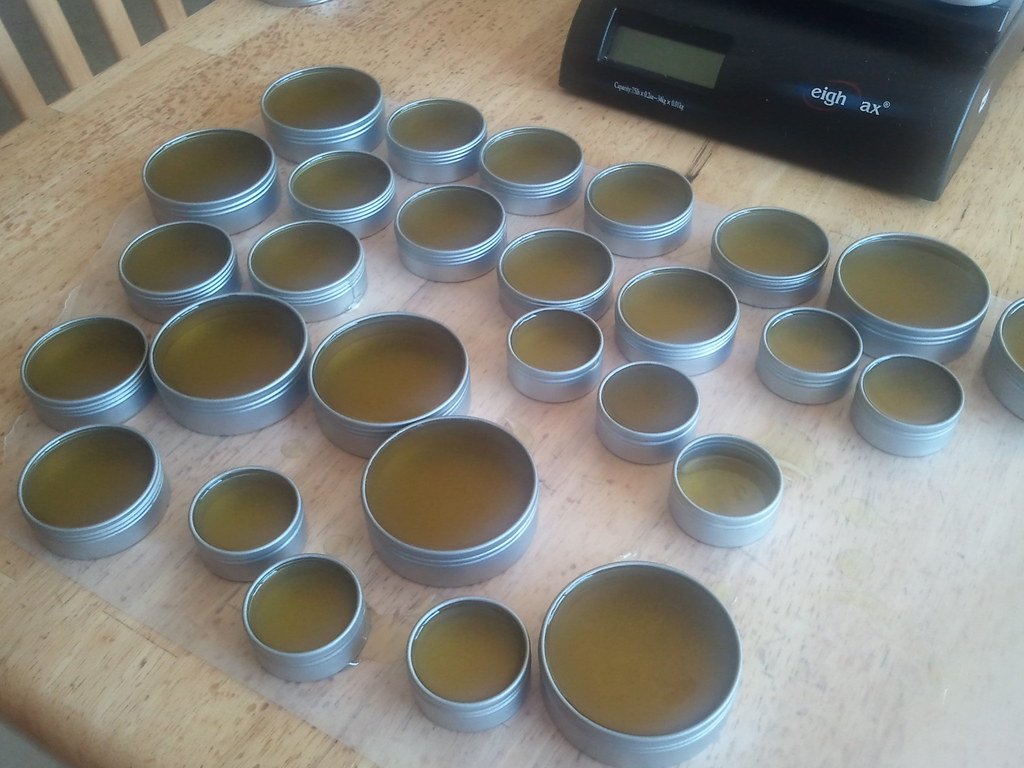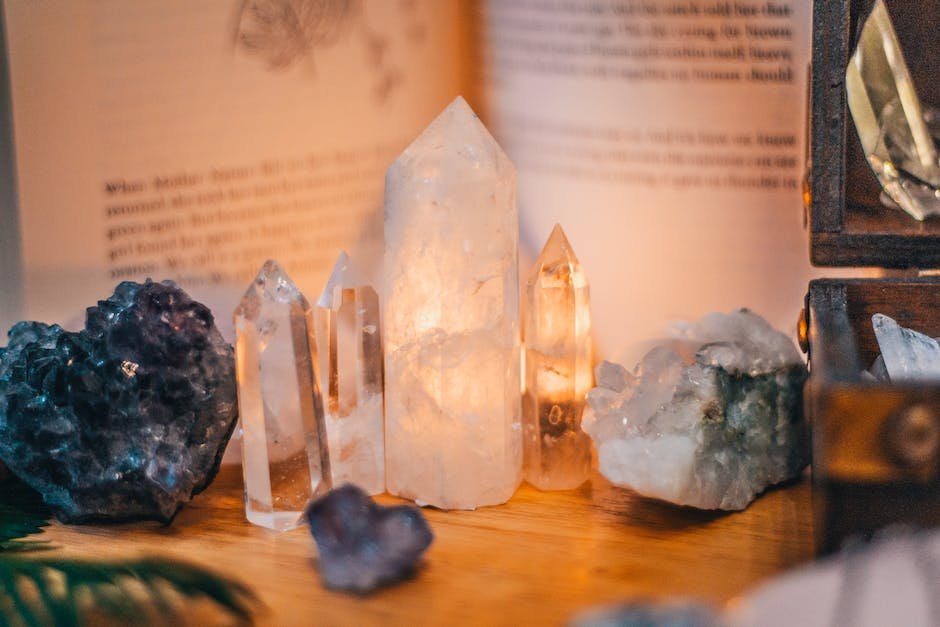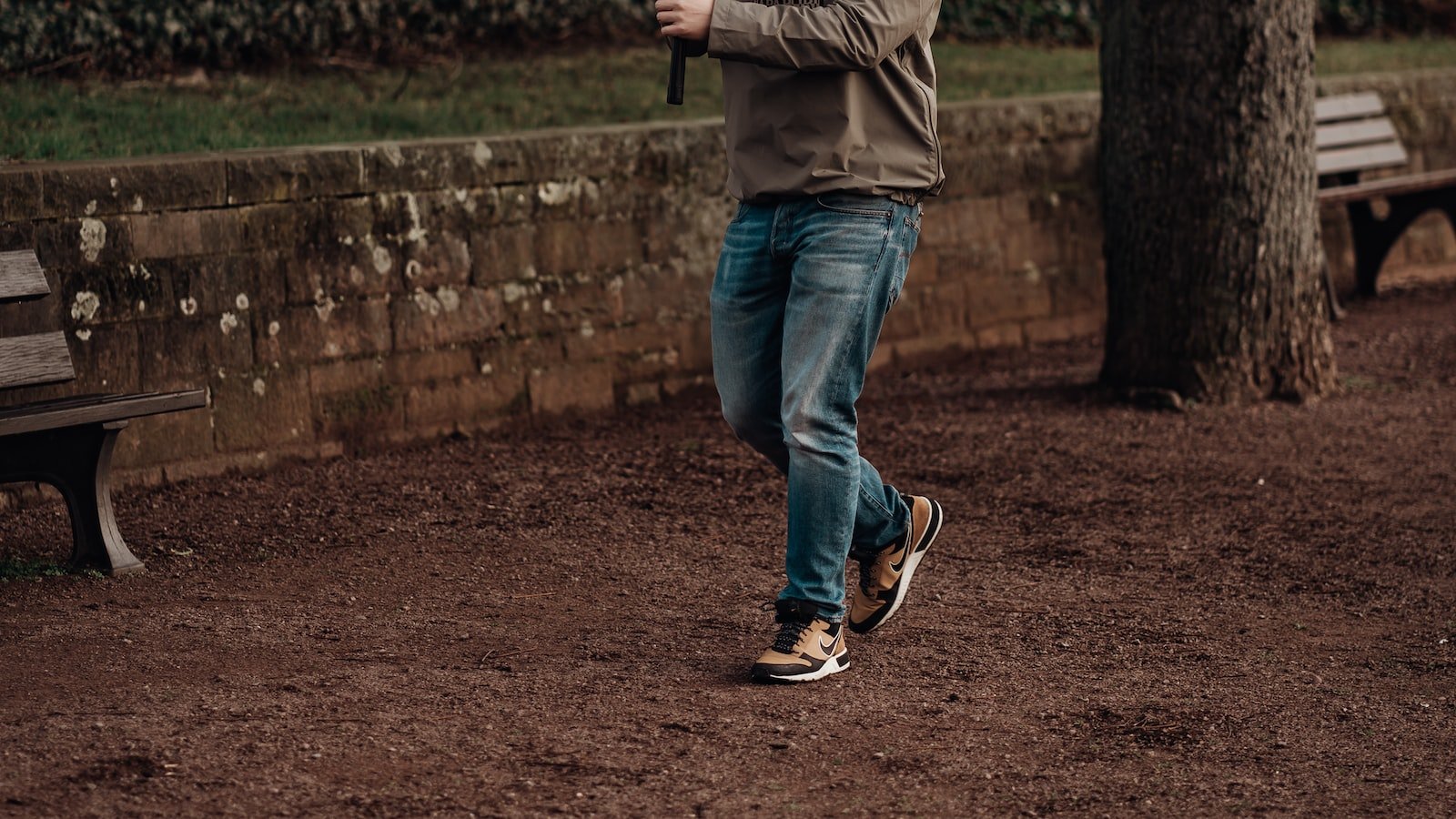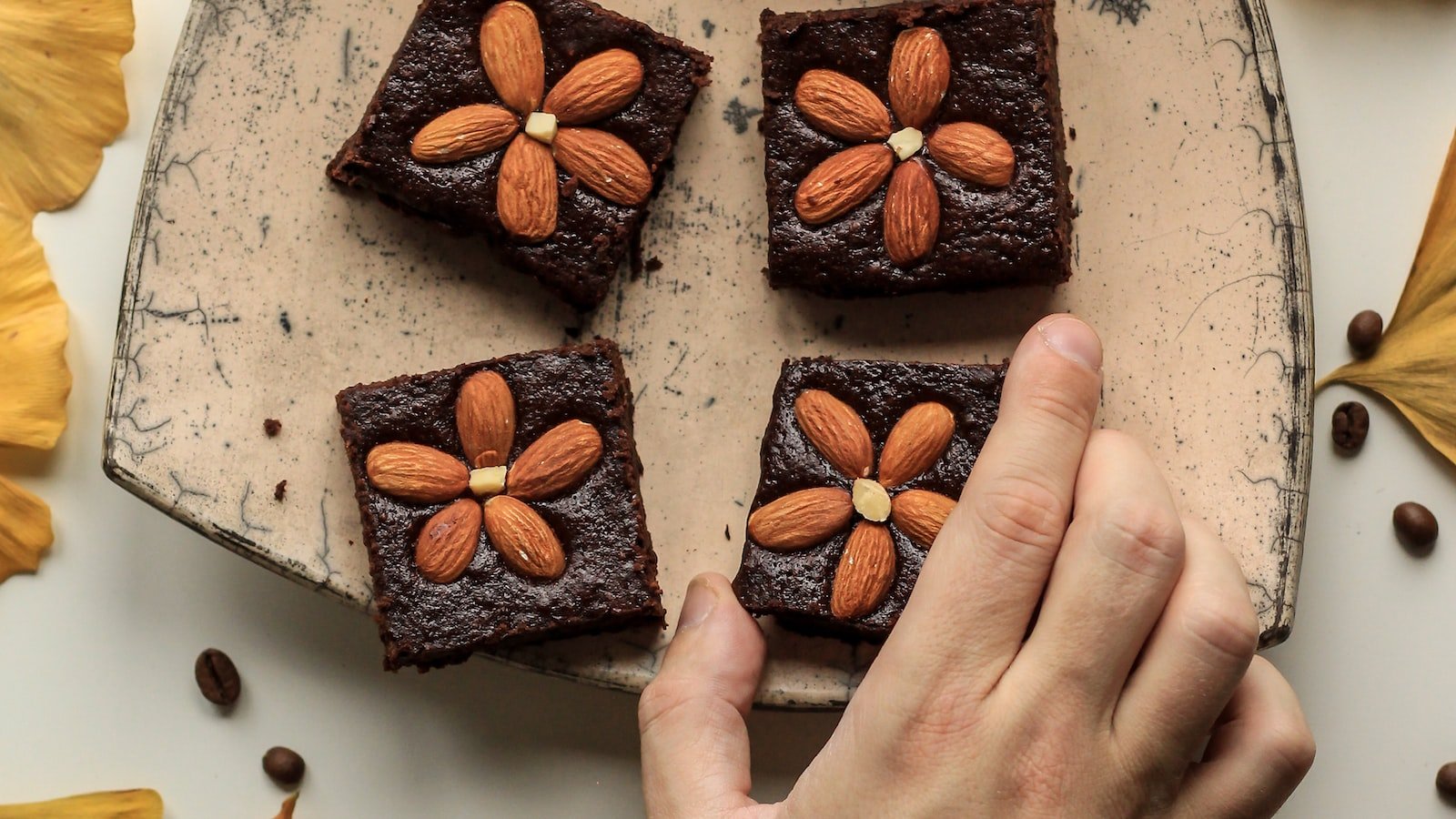Now Reading: How to Make Your Own Herbal Salves for Wound Care
-
01
How to Make Your Own Herbal Salves for Wound Care

How to Make Your Own Herbal Salves for Wound Care
The soothing power of nature has long been tapped into by healers and herbalists to concoct remedies that not only nourish our bodies but also nurture our spirits. Among these herbal wonders lies a timeless secret: the art of making your own herbal salves for wound care. Whether you stumble upon the unexpected prick of a thorny branch or wish to tend to wounds with gentle, all-natural ingredients, this age-old practice has the potential to empower you on your healing journey. With a pinch of curiosity and a dollop of creativity, you too can delve into the world of herbal salve crafting, where the boundaries of herbal wisdom and self-sufficiency are bound to intertwine in perfect harmony.
Table of Contents
- Choosing the Right Herbs for Healing Salves
- Preparing and Infusing Herbs for Salve Making
- Creating a Simple and Effective Herbal Salve Recipe
- Tips for Proper Storage and Use of Herbal Salves
- Exploring Additional Herbal Remedy Options for Wound Care
- Q&A
- Concluding Remarks

Choosing the Right Herbs for Healing Salves
When it comes to creating healing salves, the secret lies in the selection of herbs. These potent plants possess incredible properties that help soothe and promote healing. By carefully choosing the right herbs, you can tailor your salves to address specific concerns and enhance their effectiveness.
Here are a few key factors to consider when selecting herbs for your healing salves:
- Therapeutic Properties: Research the therapeutic properties of various herbs to identify ones that align with your specific needs. Whether you’re targeting inflammation, pain relief, or wound healing, different herbs offer unique benefits.
- Compatibility: Certain herbs blend well together, creating powerful synergies. Take note of herbs that complement each other to create a well-rounded and potent healing formula.
- Availability and Growing Conditions: Consider the availability and growing conditions of herbs you intend to use. It’s best to opt for herbs that are easily accessible or can be grown in your local region to ensure a fresh and sustainable source for your salves.
Incorporating the right herbs into your healing salves can make all the difference in their effectiveness. So, take your time, research, and experiment with different combinations until you find the perfect blend that brings comfort and relief.

Preparing and Infusing Herbs for Salve Making
Creating your own herbal salves can be a rewarding and therapeutic experience. The first step in this process is properly preparing and infusing your herbs to extract their beneficial properties. Here are a few key tips and techniques to ensure the most potent and effective salve.
1. Harvesting Fresh Herbs
For maximum potency, it’s best to harvest your herbs when they are at their peak. Choose a sunny morning and gather the leaves, flowers, or roots that you intend to use. Ensure that the herbs are clean, free from pests, and not damp from dew or rain.
2. Drying and Crushing
Once harvested, herbs need to be dried thoroughly to prevent mold and retain their potency. Bundle the stems together and hang them upside down in a cool, dry place away from direct sunlight. Once dried, remove the leaves or flowers from the stems and gently crush them using a mortar and pestle. This helps to release the essential oils.
3. Infusing Oils
Herbs are best infused in oils to extract their medicinal properties. Choose a high-quality, carrier oil such as olive, almond, or coconut oil. Place the crushed herbs in a clean glass jar and cover them completely with the oil. Seal the jar tightly and allow the mixture to steep for a minimum of two weeks in a cool, dark place. Remember to shake the jar gently every few days to ensure proper saturation.
By following these steps, you’re now ready to move on to the next stage of salve-making using the potent and infused herbal oils you have prepared. Enjoy the process and let your creativity soar as you develop your own unique salve blends!

Creating a Simple and Effective Herbal Salve Recipe
In the realm of natural remedies, few things are as versatile and soothing as a herbal salve. Whether you find yourself in need of skin nourishment, relief from minor irritations, or even a natural alternative for dry lips, creating your own herbal salve can be a simple and effective solution. By harnessing the healing properties of herbs and combining them with nourishing oils or waxes, you can craft a personalized salve tailored to your specific needs.
To start, gather your desired herbs, such as calendula, lavender, or chamomile, which are known for their skin-calming properties. Feel free to experiment and create a blend that resonates with you. Once you’ve chosen your herbs, select a carrier oil or a blend of oils like jojoba, almond, or coconut oil. These oils will act as the base for your salve, providing moisturizing and conditioning benefits.
Next, it’s time to infuse the herbal goodness into your carrier oil. Using a double boiler or a mason jar within a pot of water, gently heat the oil and herbs together for a few hours. This process allows the oils to absorb the beneficial properties of the herbs. Once infused, strain the mixture and discard the herbal remnants.
Now that you have your herb-infused oil, it’s time to add a natural wax to give your salve its desired texture and stability. Beeswax is a popular choice, as it not only provides a lovely consistency but also acts as a protective barrier on the skin. Melt your chosen wax and slowly incorporate it into your herb-infused oil, stirring until well combined.
Finally, you can enhance your salve with a few drops of essential oils to add fragrance or extra therapeutic benefits. Tea tree oil, for example, is renowned for its antibacterial properties, making it a great addition to a healing salve.
- To create your simple and effective herbal salve:
- Choose your desired herbs and carrier oils.
- Infuse the herbs into the carrier oil.
- Add a natural wax for texture and stability.
- Consider incorporating essential oils for fragrance and additional benefits.
- Allow your salve to cool and solidify before transferring it into suitable containers.
By following these steps and getting creative with your chosen herbs and oils, you are on your way to crafting a personalized herbal salve that can provide soothing relief and natural nourishment. Embrace the therapeutic powers of nature and let your skin thank you!
Tips for Proper Storage and Use of Herbal Salves
- Store in a cool, dark place: Herbal salves contain delicate natural ingredients that can degrade under light and heat exposure. To maintain their potency and extend their shelf life, it’s best to store them in a cool, dark place such as a medicine cabinet or a drawer away from direct sunlight.
- Avoid contamination: Proper storage also involves preventing the introduction of bacteria or other contaminants. Make sure to use clean hands or a spatula when applying the salve without directly touching it. Additionally, keep the container tightly closed when not in use to minimize exposure to air and moisture.
- Label and date your salves: It’s a good practice to label each herbal salve with its name and date of preparation. This helps in keeping track of their freshness and allows you to use them in a timely manner. Remember, quality and effectiveness of herbal salves can diminish over time.
- Perform a patch test: Before applying an herbal salve to a larger area of your body, it’s wise to perform a patch test first. Apply a small amount of the salve to a small, inconspicuous area of your skin and observe for any adverse reactions, such as redness, itching, or irritation. If any discomfort occurs, discontinue use.
- Seek professional advice: While herbal salves can have numerous benefits, it’s always a good idea to consult with a healthcare professional or an herbalist before incorporating them into your routine, especially if you have underlying health conditions or are taking medications.
Exploring Additional Herbal Remedy Options for Wound Care
When it comes to wound care, there is a multitude of herbal remedies that have been used for centuries to promote healing and prevent infection. While traditional medical treatments should always be the first course of action, many people are seeking alternative options to complement their wound care routine. Here, we will dive into a few additional herbal remedies that have shown promising results in wound healing:
1. Calendula
Calendula, also known as marigold, is a vibrant flowering herb with potent medicinal properties. Its incredible anti-inflammatory and antimicrobial properties make it an ideal herb for wound care. Applying calendula topically in the form of creams, ointments, or even poultices can help reduce swelling, relieve pain, and accelerate the healing process.
2. Aloe Vera
Aloe vera is a plant that needs no introduction when it comes to its healing benefits. Its gel, extracted from the leaves, offers a cooling and soothing effect on wounds. Not only does aloe vera promote tissue regeneration, but it also acts as a natural antibacterial agent. Applying a thin layer of aloe vera gel directly onto the wound can provide immediate relief and aid in the healing process.
3. Comfrey
Comfrey, also known as “knit-bone,” has been used for centuries to heal wounds and fractures. This powerful herb contains allantoin, a compound that helps stimulate cell proliferation and enhance the production of new tissue. Applying a poultice or cream made from comfrey leaves on a wound can improve healing time and minimize scarring.
While these additional herbal remedies offer promising results, it is essential to consult with a healthcare professional before incorporating them into your wound care routine. It’s also crucial to remember that not all remedies work the same for everyone, so listen to your body and adjust accordingly. Explore the power of nature alongside traditional methods to find the perfect combination for your wound care needs.
Q&A
Can I make my own herbal salves for wound care?
Absolutely! Making your own herbal salves for wound care is a fun and effective way to promote healing. Plus, you have the flexibility to customize the ingredients according to your specific needs and preferences.
What are some common herbs used in herbal wound healing salves?
There are various herbs you can use in your herbal salves. Some common ones include calendula, lavender, plantain, and comfrey. These herbs have soothing and healing properties that can aid in the recovery process.
Where can I find these herbs for making my own salves?
You can find these herbs in health food stores, wellness shops, or online herbal retailers. Alternatively, you can even grow your own herbs in a small garden or pots, providing you with fresh and readily available ingredients for your salves.
What are the basic steps for making a herbal wound healing salve?
The basic steps involve infusing the herbs in oil, straining the oil, melting beeswax, combining the infused oil with the beeswax, pouring the mixture into containers, and allowing it to cool and solidify. It’s a simple process that can be easily mastered with a little practice.
How long does it take to make a herbal salve?
The process of making a herbal salve typically takes a few hours from start to finish. This includes infusion time, melting beeswax, and allowing the mixture to cool and solidify. However, the actual hands-on time involved is relatively short.
Are there any safety concerns to consider when making herbal salves?
While making your own herbal salves is generally safe, it’s essential to exercise caution. Make sure to research the potential contraindications and allergies associated with the herbs you’re using. Additionally, always use clean utensils and containers to avoid contamination.
Can I use my herbal salve on any type of wound?
Herbal salves are suitable for minor cuts, scrapes, and burns. However, for deep or severe wounds, it’s best to seek medical attention. Always consult a healthcare professional if you’re unsure about the appropriate treatment for any specific wound.
How long does a herbal salve last?
When stored properly in a cool, dry place, herbal salves can last for up to a year or even longer. However, it’s important to check the salve for signs of spoilage, such as changes in color, texture, or scent, before using it on wounds.
Concluding Remarks
In the enchanting realm of herbal remedies, the potential for healing knows no bounds. With each season infusion and each garden harvest, we unlock the power of Mother Nature’s apothecary. Now that you have learned the art of crafting your very own herbal salves for wound care, you hold the key to a world where botanical wisdom and nurturing touch intertwine effortlessly.
As you venture forth with your newfound knowledge, remember that creating herbal salves is as much an art as it is a science. Allow your imagination to dance alongside the forest whispers, as you blend the earth’s rich gifts into healing balms. With time and practice, your intuition will guide you through the subtle symphony of herbs, waxes, and oils, creating harmonious blends that speak to the deepest needs of our bodies and spirits.
As you stand by the worktable, wielding your herbal-infused oils and carefully selecting each ingredient, remember that you are embarking on a journey of healing and self-reliance. Within the tiny jars gleaming with translucent hues, you hold the essence of centuries-old wisdom, passed down from healers and healers before them.
Imagine the wonders your humble salves will bring, soothing aching wounds, healing scars, and bringing solace to weary souls. Be it a small graze, a deep cut, or a stubborn infection, your salves hold the transformative magic of nature, waiting to be awakened by your tender touch.
Through this ancient alchemy, you become a guardian of the delicate balance between humanity and the natural world. As you craft your salves, listen to the Earth’s heartbeat, and let it guide your hands, reminding you that every ingredient comes from her fertile soil. Cherish the connection you forge with each plant, honoring its long history of healing and its benevolence towards humankind.
And so, with each batch, you become part of a timeless tradition, perpetuating the ancient knowledge of herbalism that has served and nurtured countless generations. Share your salves with loved ones and strangers alike, spreading the potency of nature’s embrace to all who seek its healing touch.
Now, take these lessons with you, like seeds sown into fertile soil, and watch them flourish. May your journey be one of discovery, wonder, and, above all, a profound respect for the intricate tapestry of healing that nature weaves.
As an affiliate, my content may feature links to products I personally use and recommend. By taking action, like subscribing or making a purchase, you’ll be supporting my work and fueling my taco cravings at the same time. Win-win, right?
Want to read more? Check out our Affiliate Disclosure page.



